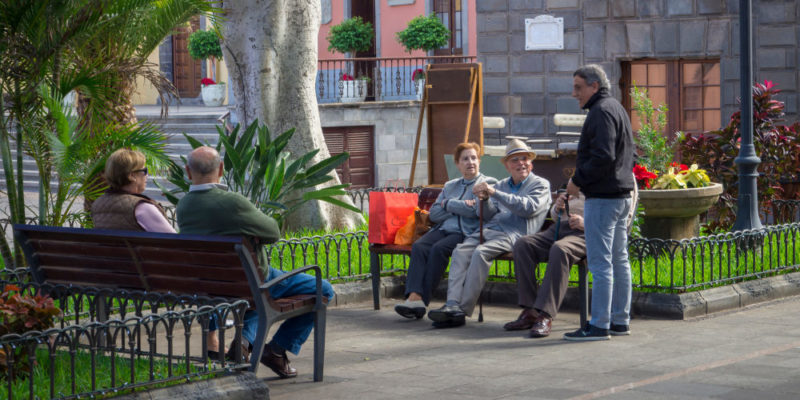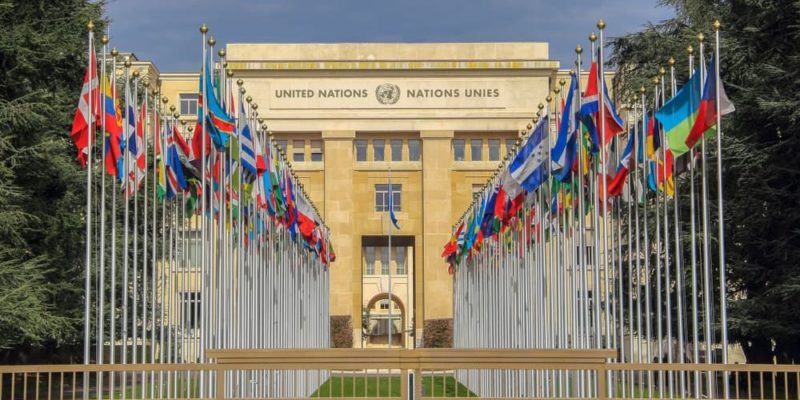We explain what a community is, the types that exist and their functions. Also, what are its general characteristics and examples.
What is a community?
The term community has several possible uses. The most common has to do with a group of human beings that has some type of common traits (such as language , customs, values , etc.), or some type of encounter context. On the other hand, in biology and ecology it refers to a set of living beings of different species that interact in a given area.
The term comes from the Latin communitas and initially referred to people who live together, who share interests and live under the same rules. This sense is preserved to this day. Everything related to communities is called community.
Community concept
The concept of community depends on the discipline and the perspective from which it is approached. For example, in each of these disciplines it has a specific definition:
- Ecology . A community is a set of living beings linked to each other in a given area, through food or trophic chains .
- Policy . It is a human group organized, like countries, around the realization of a common goal .
- Administration . It is a synonym for company or company.
Community relations
 Within communities, of whatever type, relationships are produced between their parts , which can be called community relationships. These relationships are not necessarily hierarchical in nature, but are usually considered equals.
Within communities, of whatever type, relationships are produced between their parts , which can be called community relationships. These relationships are not necessarily hierarchical in nature, but are usually considered equals.Community relations are often considered to be those that take place outside the states of the world . Among them are those that come from the mutual support of popular communities, or of the individuals that make up civil society .
In the case of ecology, community relations are, instead, the dynamics of predation , commensalism and symbiosis. They occur between species that make up, among other things, the food chain of the ecosystem .
Community types
There are numerous classifications of communities. We can list some like:
- Local community. A set of human beings that inhabit a common area and interact with each other.
- International community. The concert of the countries of the world and their relations with each other.
- Ecological community. The set of living beings of different species that are linked to each other through food relationships.
- Community of interests. A type of association of people who come together to share around a common interest or passion.
- Scientific community. This is the name given to the set of voices and opinions in the scientific field of a country, a region or the world.
- Community of goods. A type of legal contract that attributes to a group of natural or legal persons (called “commoners”) the ownership of a patrimonial mass.
Roles of a community
 Human communities are generally organized around a common purpose , which is variable. Its members often share passions, needs or desires, and their association derives a greater possibility of achieving those purposes, in whatever way.
Human communities are generally organized around a common purpose , which is variable. Its members often share passions, needs or desires, and their association derives a greater possibility of achieving those purposes, in whatever way.For example, an artistic community includes all those artists and scholars of art in a country, a region or the world. In this way, it gives them a capacity for organization, joint spokesperson or knowledge exchange that is always for their mutual benefit or representation.
Importance of communities
Living beings, and especially human beings, cannot live in isolation . In this sense, the formation of communities of all kinds comes naturally to us, being gregarious beings, and we value them as a way of accompanying us in life, building joint tools and mutual appreciation.That is why we people like to belong to a certain community , the approval of those who make it up together with us is valuable to us, and the debate about the way in which we want to conduct our communities is so important .
Communes
Communities should not be confused with communes, which is the name given in many Spanish-speaking countries to the smallest territorial or urban units in which a city can be organized. In other words, they are smaller administrative divisions that, grouped together, make up larger units, and that can be equivalent to municipalities or councils.
Virtual communities
 The new information technologies and the world of cyberspace (or world 2.0) have brought about profound changes in the physical way of socializing and contacting people. Among them, the possibility of creating remote communities, with quick and differentiated contact , without the rigors that previously implied mass meetings, exchange of letters, etc.
The new information technologies and the world of cyberspace (or world 2.0) have brought about profound changes in the physical way of socializing and contacting people. Among them, the possibility of creating remote communities, with quick and differentiated contact , without the rigors that previously implied mass meetings, exchange of letters, etc.This new type of communities that emerged at the end of the 20th century and the beginning of the 21st are known as virtual communities. An example of this are discussion forums on the Internet , chat rooms or social networks . These instruments allow the formation of human relationships and the exchange of opinions and interests, through an Internet connection.
Utopian communities
Utopian communities were forms of association based on solidarity , mutual commitment, companionship and collective property, emerged during the 19th and early 20th centuries as an alternative to early capitalist society , based on competitiveness, selfishness and accumulation. They were involved with the idea of communism and socialism .The first utopian communities arose in France during the 18th century : the famous Paris Commune that played a vital role in the French Revolution . He then inspired utopian communities that sought to isolate themselves and resist the consumer society. They were common in the US, Europe and Australia, and today they are called Ecovillas, since they have an organized global network .
Communism
 Communism is a political-social, economic and ideological system that is opposed to private property . It is governed by the principle of community well-being over individual well-being. There is a controversial discussion regarding its applicability or character, rather, totally utopian.
Communism is a political-social, economic and ideological system that is opposed to private property . It is governed by the principle of community well-being over individual well-being. There is a controversial discussion regarding its applicability or character, rather, totally utopian.In practice, it is translated into statist systems , in which the ownership of the means of production of societies is made collective. Modes of community association or popular organization are encouraged, even if it means the sacrifice of individual freedoms .
Community example
 A perfect example of community is the so-called international community or concert of countries . In it, in principle, all the nations of the world are taken into account through their diplomatic representation, to try to conduct themselves and negotiate reciprocally for the benefit of the majority.
A perfect example of community is the so-called international community or concert of countries . In it, in principle, all the nations of the world are taken into account through their diplomatic representation, to try to conduct themselves and negotiate reciprocally for the benefit of the majority.In practice, however, there are several international communities depending on the degree of integration of the region or the status of official recognition that a nation has. This is proof that it is a community that is governed by its own laws and whose members are, in one way or another, interconnected.
The above content published at Collaborative Research Group is for informational and educational purposes only and has been developed by referring to reliable sources and recommendations from technology experts. We do not have any contact with official entities nor do we intend to replace the information that they emit.
Anas is an editor of a prestigious publishing company in the United States. She studied Mathematics in Arizona. Anas is also a teacher and one of her long-term goals is to build an institution that offers free education to everyone who are financially not stable. .
Leave a reply
Your email address will not be published. Required fields are marked *Recent post

Sport: What Is It, Types, Risks, Features, Characteristics and Examples

Dogs: Emergence, Features, Characteristics, Feeding and Breeds

Story: Definition, Elements, Structure, Features and Characteristics

